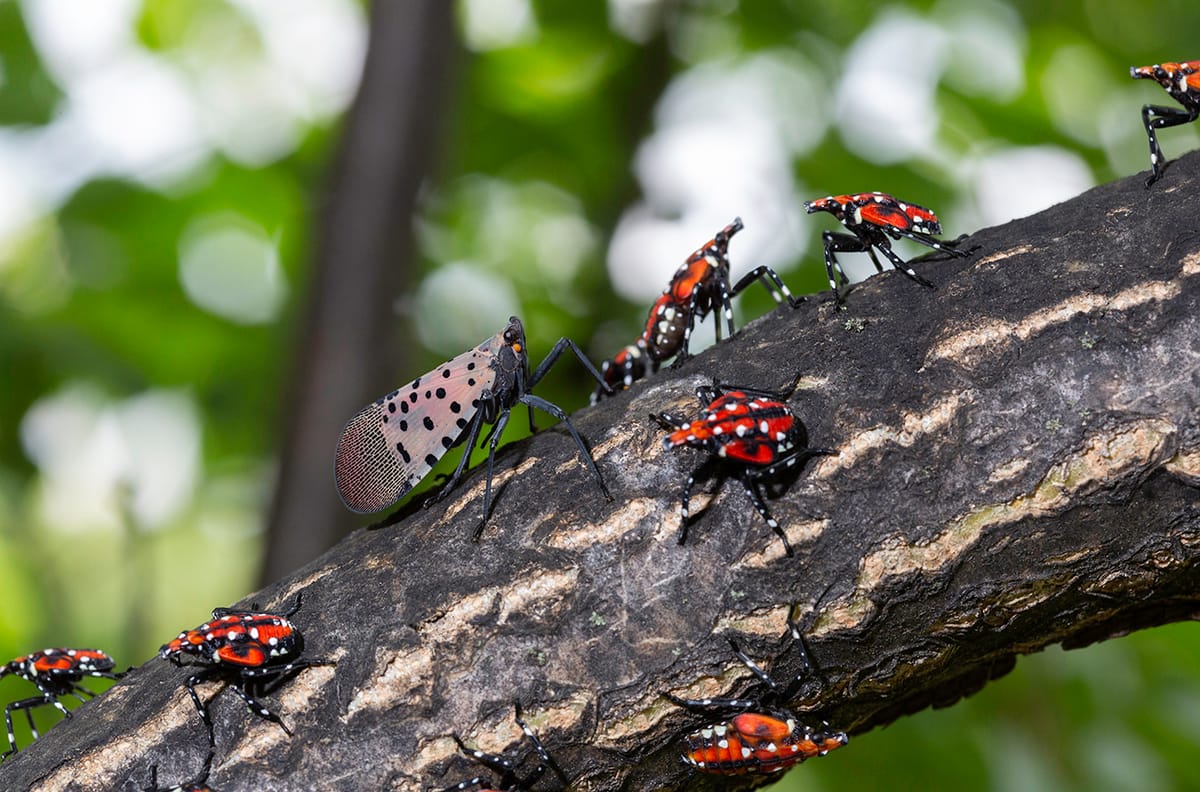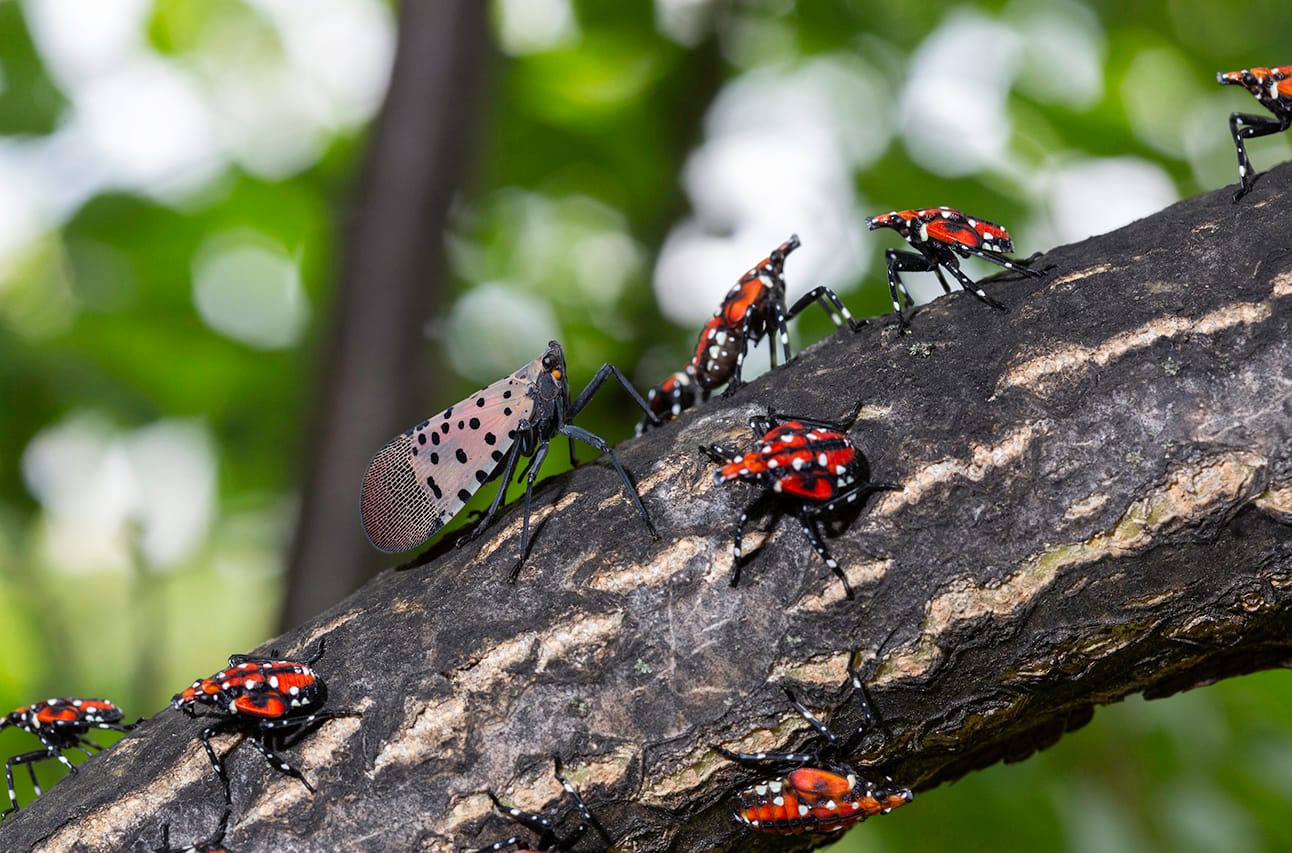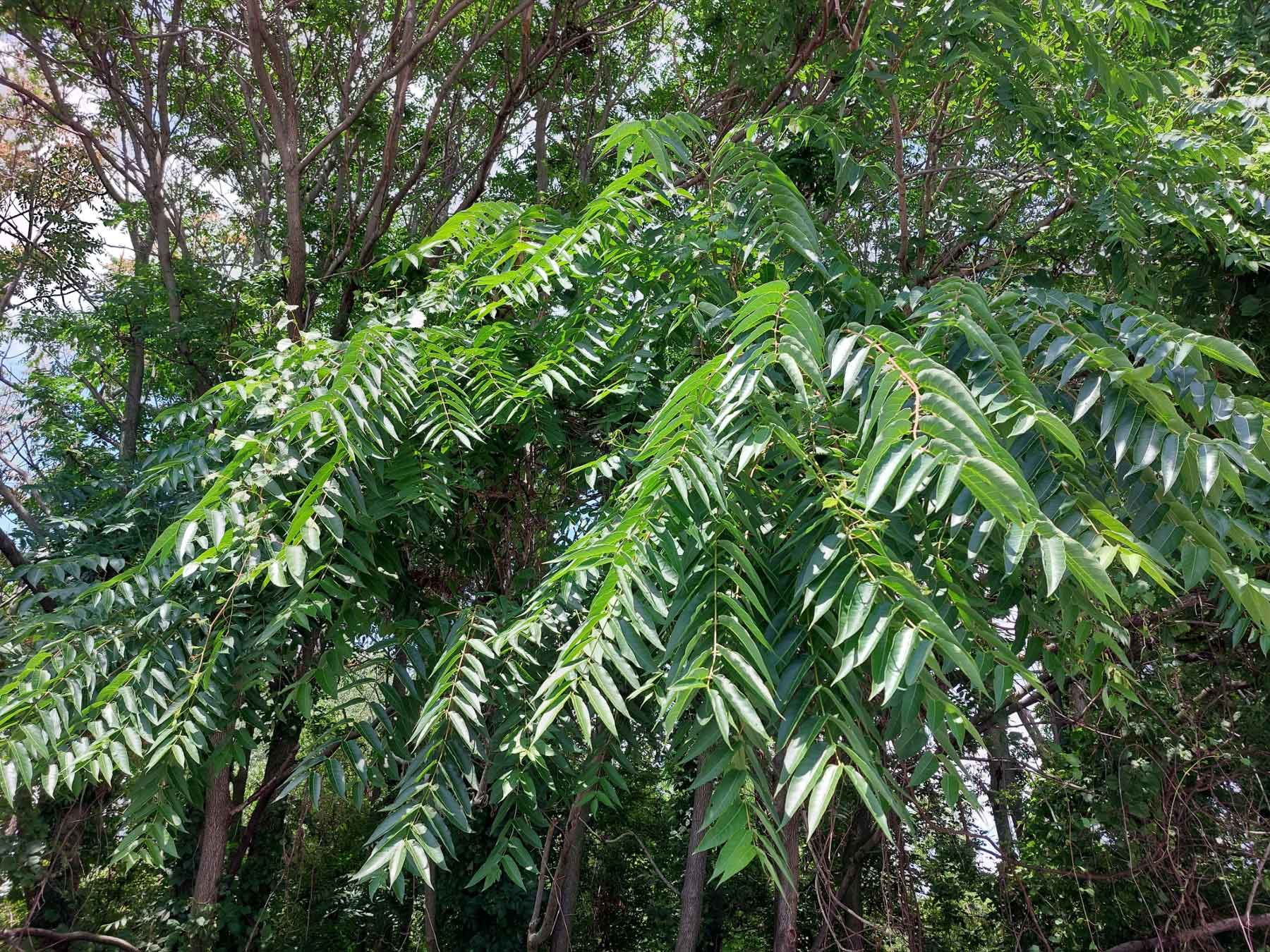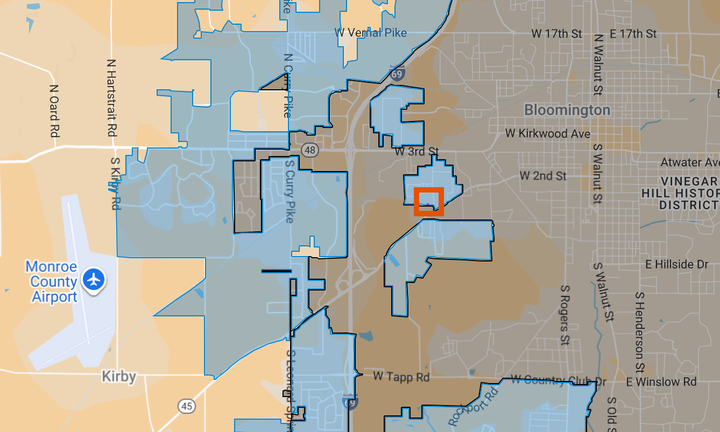Bloomington sounds alarm on spotted lanternfly: Residents asked to report sightings
An invasive insect, the spotted lanternfly, is approaching Bloomington, putting crops and gardens at risk. That has prompted city officials to ask for help from residents to identify these pests as quickly as possible.



Left: Spotted lanternfly photo by Steve Ausmus, USDA/ARS Right: Tree of heaven photo by John Woodmansee.
An invasive insect, the spotted lanternfly, is approaching Bloomington, putting crops and gardens at risk. That has prompted city officials to ask for help from residents to identify these pests as quickly as possible.
A news release issued on Monday by city of Bloomington urban forester Haskell Smith says the species has already been found in Bartholomew County, which is just around 50 miles east of Monroe County. Smith is alerting residents to the dangers posed by the insect. "This pest poses a serious risk to local agriculture, landscapes, and natural ecosystems," the news release says.
Bloomington is asking residents to collect or photograph and destroy any suspected spotted lanternflies, and report them to the Indiana Department of Natural Resources (IDNR) using an online form.
The news release says the lanternfly has distinctive markings depending on its stage of life. "In early stages, it appears black with white spots, then red with black and white patches," it says. "Adults are roughly one inch long with gray wings that reveal bright red underwings when opened." Additional identification information is available on the IDNR's spotted lanternfly webpage.
If found in Bloomington, spotted lanternflies will likely be on trees of heaven. According to Purdue University Extension, the tree has smooth, light gray bark. Its compound leaves resemble those of the black walnut but have more leaflets. The tree smells like rancid peanut butter.
There have been four sightings of spotted lanternflies in Bartholomew County starting in July 2024. The most recent one, about a month ago on May 2, includes a note from the person who identified it with an attached photo: "Several of these were walking around on my grill when I came outside. They are smaller than my pinky nail so far."
The spotted lanternfly belongs to the informal category of plant hoppers, and is indigenous in parts of China and Vietnam. According to the IDNR, the insect pierces a host plant's leaves, branches, and trunks, feeding on the sap, which can cause damage to crops, gardens, and natural areas. The spotted lanternfly's first detection in the U.S. was in Pennsylvania in 2014. The first sighting in Indiana did not come until 2021.
The news release says that the spotted lanternfly feeds on more than 70 plant species. Its preferred host, tree of heaven, is an invasive tree species that produces an overly abundant amount of seeds, according to the Nature Conservancy.
According to the news release, the city of Bloomington's urban forestry team is identifying tree of heaven on public lands, to schedule removals to reduce the role of the tree as a host for the spotted lanternfly.
As of June 9, Bloomington's tree inventory shows 56 trees of heaven. In an email to The B Square, urban forester Haskell Smith said that he's found that several trees of heaven in the inventory have been misidentified. "[The] first step is taking [a] better look at these sites to confirm the species," he wrote. He described the species as "wildly resilient," requiring the use of herbicide to fully kill its root system. "There are indeed likely hundreds of them throughout private properties, and full scale eradication from city limits seems unlikely."
"There's also the flip side of the coin," Smith continued. "If we remove all the [trees of heaven], will we be able to detect [spotted lanternflies] early enough?" As the spotted lanternfly's key host, trees of heaven are a predictable place to look for the insects. Therefore, he said it could be beneficial to leave some male trees that don't produce seeds, as indicators of the spotted lanternflies.




Comments ()